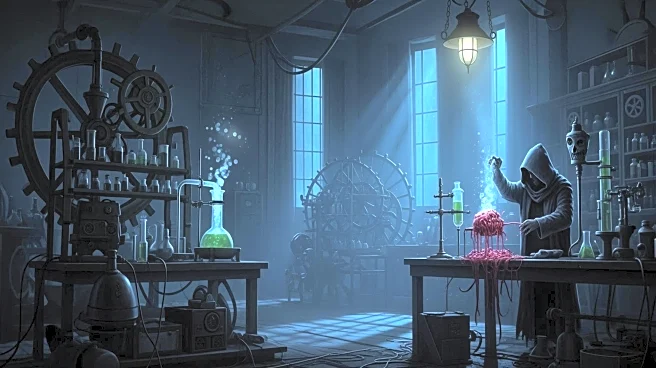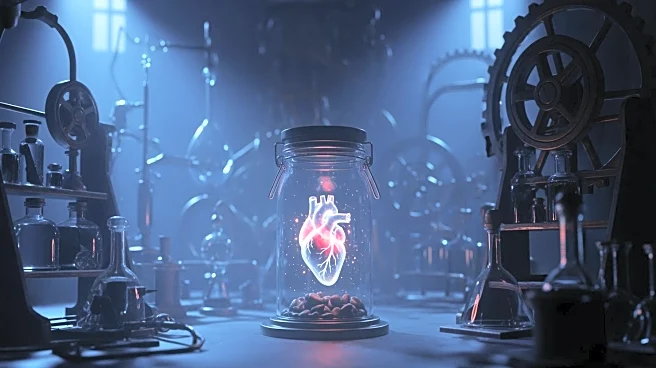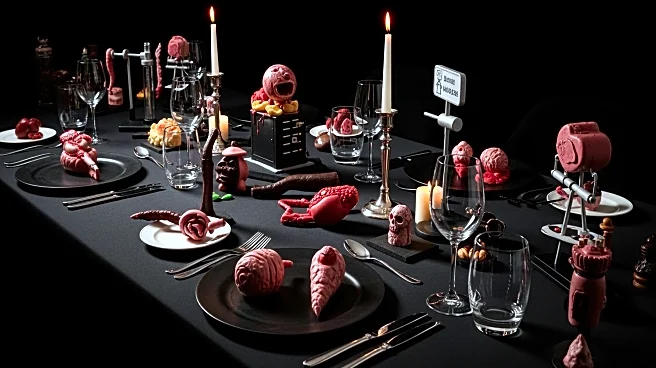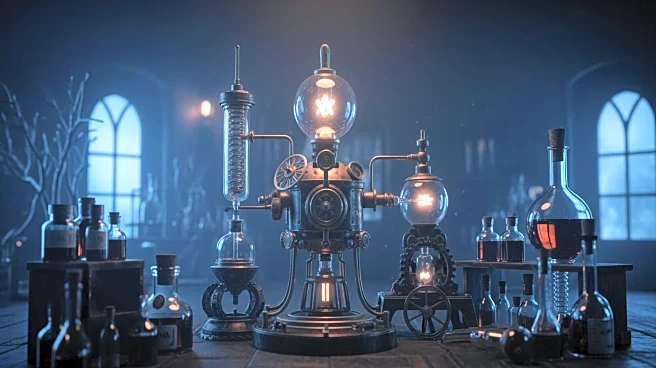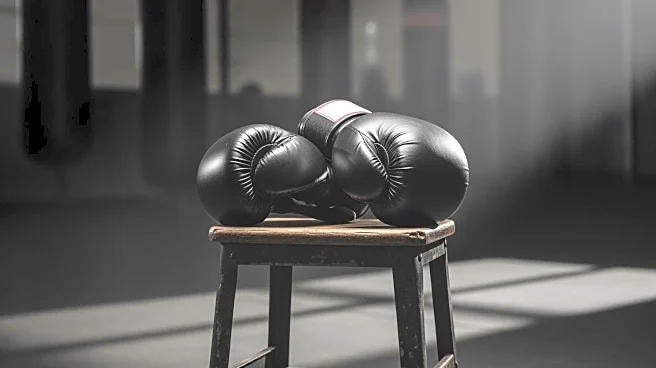What's Happening?
Guillermo del Toro's latest film, 'Frankenstein,' features a pivotal dungeon scene where Elizabeth Lavenza, played by Mia Goth, encounters the Creature, portrayed by Jacob Elordi. The scene is a significant
moment in the film, showcasing Elizabeth's discovery of the Creature, who is hidden away in the castle's basement. The creative team, including composer Alexandre Desplat, cinematographer Dan Lausten, set designer Tamara Deverell, makeup artist Mike Hill, and costume designer Kate Hawley, provide insights into the scene's development. The film incorporates a circle motif throughout, symbolizing life and continuity, which is evident in various set designs. The Creature's prosthetics reflect Mary Shelley's description, with a unique aesthetic that del Toro envisioned as a 'rock star' creation. The scene is described as a ballet, emphasizing the emotional connection between Elizabeth and the Creature.
Why It's Important?
The scene in 'Frankenstein' highlights the collaborative effort in filmmaking, showcasing how various elements like set design, music, and costume contribute to storytelling. Del Toro's approach to the Creature's design challenges traditional horror aesthetics, offering a fresh perspective on the classic tale. This creative process not only enriches the narrative but also influences how audiences perceive the characters and their interactions. The film's unique visual and thematic elements may set a precedent for future adaptations of classic literature, encouraging filmmakers to explore innovative interpretations. The scene's emotional depth and artistic execution could impact the film's reception, potentially influencing awards considerations and audience engagement.
What's Next?
As 'Frankenstein' continues to play in select theaters and stream on Netflix, its reception will likely influence future projects by Guillermo del Toro and the involved creative team. Positive audience and critical response could lead to further exploration of classic tales with modern twists, encouraging filmmakers to push creative boundaries. The film's unique approach may inspire discussions on the adaptation of literary works, potentially affecting how studios approach similar projects. Additionally, the film's success could bolster the careers of its cast and crew, opening opportunities for more innovative collaborations in the industry.
Beyond the Headlines
The film's exploration of themes such as identity, acceptance, and the human condition through the Creature's narrative offers deeper cultural and ethical implications. It challenges viewers to reflect on societal norms and the treatment of those deemed 'different.' The creative choices in 'Frankenstein' may spark conversations about the role of art in addressing complex social issues, highlighting the power of storytelling in fostering empathy and understanding. This could lead to broader discussions on the representation of marginalized voices in media and the importance of diverse narratives in shaping cultural discourse.
